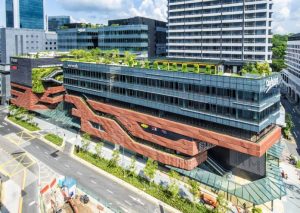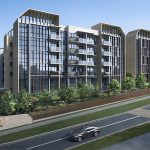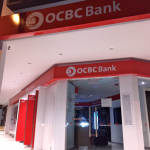As landlords and retailers come to terms with the disruption posed by e-commerce, retail malls are rapidly evolving beyond a transactional model to embrace community building through experiential and activity-based concepts.
While Singapore’s GDP and household incomes have steadily recovered since the 2009 global financial crisis, rising at a compounded annual growth rate (CAGR) of over 4%, retail and F&B growth has however not kept pace, with annual growth barely reaching 2% over the same period.
In a bid boost footfall, maintain high occupancy rates and shore up tenant sales and operating profits, retail malls are adding communal spaces and non-retail components into their mix, with the aim of creating communities within their premises.
“Online commerce has given consumers an unprecedented luxury of choice and convenience through social shopping, peer-to-peer influence and round-the-clock access to vast repositories of information,” said Ms Ong Choon Fah, Edmund Tie’s chief executive officer.
“In response to the changing landscape, landlords and retailers are giving customers reasons to visit over and over again. Physical retail is differentiating itself by furnishing experiences that their online counterparts can’t offer, and integrating online-offline retailing by adopting an omnichannel approach,” she added.

Increasingly, retail malls are featuring focal points – which may not even be retail in nature – around which people can gather.
Table of Contents
The recently reopened Funan Mall, for example, offers a publicly accessible rooftop Urban Farm, rock-climbing facilities, a futsal court and even an indoor cycling track on top of an impressive array of F&B outlets and flagship brands. From a nondescript lineup of IT stores, Funan has evolved far beyond a hangout for techies to become a vibrant space where shoppers, families and hobbyists can shop, eat and play.
The iconic Rain Vortex, the world’s tallest indoor waterfall at Jewel Changi, attracts huge throngs seeking “Instagrammable moments”, while the mall’s Canopy Park and Hedge Maze are compelling play attractions designed to encourage consumers to step out of their homes and return to the shopping centre.
In line with the town-centre concept, the award-winning The Commons community mall in Bangkok likewise features ample room, amounting to some 5,000 sq m (or 53,800 sq ft), for open communal uses including family-friendly play areas and space for regular events and activities such as cooking workshops, live music and community gatherings.
In addition to community building, pop-up retail, which originally served as testbeds for new products or e-businesses taking a leap into brick-and-mortar, is now fast gaining traction even among established brands, and offers another avenue through which physical retail can attract footfall.
Ms Chua Wei Lin, Edmund Tie’s executive director and regional head of business space said: “Defined by a continually changing mix of merchants and brands, pop-up retail gives malls the opportunity to offer additional options on top of their existing retail mix. Its ever-changing nature creates a sense of novelty and excitement that will attract shoppers.”
Funan’s Tree of Life, for example, is an impressive centerpiece that comprises 20 retail pods, allowing both emerging and established brands to showcase a variety of products and services for limited periods before being refreshed again. Bangkok’s ICONSIAM likewise offers SookSiam, a co-creation and cultural space spread over a sprawling 16,000 sq m (or 172,200 sq ft), which rotates indigenous entrepreneurial set-ups for maximal diversity.
“Notwithstanding geopolitical, macroeconomic and technological headwinds, physical retail remains highly relevant,” said Ms Ong. “In 2018, brick-and-mortar stores accounted for more than 90 per cent of retail sales, and the importance of physical retail is further corroborated by the fact that established online merchants – such as Taobao and Love, Bonito – have expanded into physical stores. Indeed, malls are now evolving to become the third place where people gather to relax and socialise.”
https://www.icompareloan.com/resources/mortgage-broker-singapore-best-rate/
Mr Paul Ho, chief mortgage officer at iCompareLoan, said, “retail malls are still experimenting on concepts which work best because the entire retail eco-system in Singapore remains in a flux.”
A retail sector research by Savills released on 17 August, suggests that vacancies are moderating while rents are weakening. The research by the prominent real estate services company noted that despite the festive spending prior to Hari Raya Aidilfitri, which lifted retail sales (excluding motor vehicles) in May, the overall sales growth for both April and May was restrained by sluggish sales of discretionary goods.
The island-wide vacancy level for the retail sector was down by 0.2 of a percentage point (ppt) quarter-on-quarter (QoQ) to 7.3% in Q2/2018, marking the lowest quarter since 2016, said the report. It further noted that the retail rental index in the central region slipped 1.1% QoQ in Q2/2018, reversing the slight recovery of 0.1% in the preceding quarter. Savills prime monthly rents in Orchard Road and the suburban area stayed fl at at S$29.90 and S$28.80 per sq ft respectively in Q2/2018.
The research on the local retail sector suggested that although the retail industry remains very challenged, rents may be trying to find a base at current levels. For the past few years, household income and tourism expenditure have been rising consistently and it seems counter intuitive that the retail sales index should remain subdued for so long. The Savills asked if the new electronic payment means were causing the under-reading of sales in retail malls.
“(Not) only has the retail sales index not headed anywhere since 2014, there has been an increase in retail supply. The combined effects should dilute retail sales per square foot and turn retailers’ fortunes further south. Instead, since 2016, we have seen improving retail vacancy rates. All of this hints at a possible hidden variable(s) that is causing retail sales to remain in the doldrums. We shall be looking closely at this possibility over the next few quarters to try to uncover the causality that is dampening the retail sales index.”






